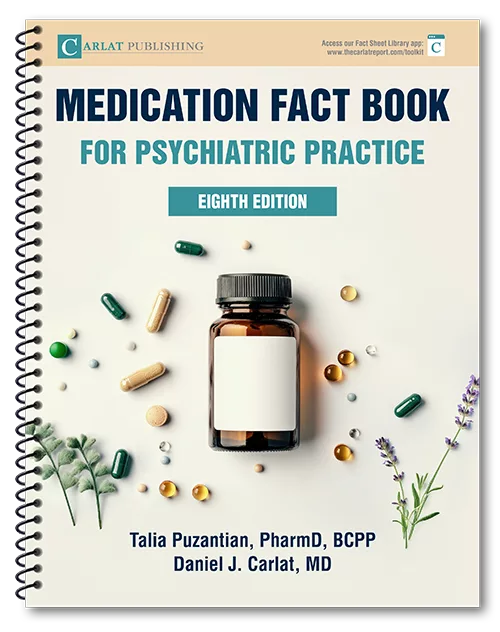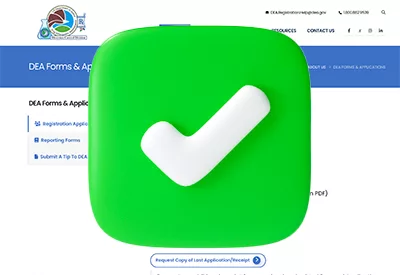SAINT TMS is now available. We take a closer look at its record-breaking effect size.
Publication Date: 11/24/2025
Duration: 09 minutes, 53 seconds
Transcript:
KELLIE NEWSOME: When five antidepressants have failed to work, how hopeful are you for number 6? If the next one is SAINT TMS, there’s a good chance – and an 80% chance - it will bring full recovery within a week. Stay tuned for a practical guide. Welcome to The Carlat Psychiatry Podcast, keeping psychiatry honest since 2003.
CHRIS AIKEN: I’m Chris Aiken, the editor-in-chief of The Carlat Psychiatry Report.
KELLIE NEWSOME: And I’m Kellie Newsome, a psychiatric NP and a dedicated reader of every issue.
CHRIS AIKEN: In March of 2017, a group of researchers at Stanford University launched a new clinical trial. The trial did not go as expected, but it has changed the way we approach treatment-resistant depression. Today, we’re going to look at this study and what it means for your patients who haven’t recovered after 3 to 7 antidepressant failures – the typical range in this study.
KELLIE NEWSOME: The treatment they were testing was a new form of transcranial magnetic stimulation, or TMS. At first, they called it spaced-TMS, but as the lead author, Nolan Williams, saw how powerful it was, he changed the name to the more angelic “SAINT TMS,” an acronym for Stanford Accelerated Intelligent Neuromodulation Therapy. Then, he had to change it again, after a journal reviewer complained that we shouldn’t mix religious language with medical treatment. So, SAINT became SNT: Stanford Neuromodulation Therapy. Midway through the trial, Williams and his team were forced to make a different kind of pivot.
CHRIS AIKEN: It was three years into the study, and they had treated 30 patients, but before enrolling anymore, the team peaked at the data to see how things were progressing. This is standard research protocol. If you’re testing a new treatment, you need to know if it’s causing problems before you put more subjects through the test. What they found was not a problem – SNT was well tolerated. Instead, they became alarmed at how powerful it was. It had already achieved a clear statistical difference from placebo, at the midway point, with an effect size of 1.5. In the face of that, they wondered if it was ethical to continue putting severely depressed patients through the sham, or fake placebo version of TMS. So, they halted the study and submitted those midpoint results to the FDA. Here’s what it showed:
1. 79% achieved full remission with SNT TMS, an unheard-of figure for this level of treatment resistance, with an average of 5 failed antidepressants.
2. By comparison, remission rates were 10 times lower, only 7%, with the sham treatment.
We have never seen remission rates that high in patients with such a profound degree of treatment resistance, with an average of five failed antidepressants. With traditional TMS, remission rates in those trials are around 30%, certainly not 79%, and those trials are trials that enroll people after just 1-2 antidepressant failures.
KELLIE NEWSOME: In this age of psychedelic miracles, those remission rates may not phase you but consider this. The psychedelic trials are not truly double blind – over 90% of the subjects can tell that they got a psychedelic. Nor is ketamine double blind – there the correct guess is 75%, and with SSRIs it’s lower, but still a revealing 60%. This is a real conundrum. How do you invent a treatment that is rapid and powerful, but at the same time so discreet that patients cannot tell when they received it? Somehow, SNT TMS accomplished that. The subjects could not tell which treatment they got, even though it got them better over 5 days.
CHRIS AIKEN: Let's pause for a preview of the CME quiz for this episode. You can earn CME through the link in the show notes.
KELLIE NEWSOME: 1. How does SNT TMS differ from traditional TMS?
A. Longer sessions of magnetic therapy (1-2 hours)
B. It targets a different brain region (amygdala)
C. It is combined with psychotherapy to enhance neuroplasticity
D. It uses a functional MRI to guide the magnet
CHRIS AIKEN: The Stanford group published their findings in, February of 2022, and the FDA cleared the SNT protocol later that year. The first devices became commercially available in August of 2024 along with new CPT codes to cover the intensive treatment, and coverage by Medicare.
KELLIE NEWSOME: SNT is intensive. It’s delivered over five days, each treatment day lasts 10 hours. Centers that offer SNT TMS usually hire staff in two shifts. The magnetic therapy is delivered over 10 minutes every hour for those 10 hours. By comparison, standard TMS takes 6 weeks, with once daily treatments that last 20-45 minutes, delivered 5 days a week. That’s a long wait to recover. I’ve seen profound recoveries with standard TMS that happened so gradually the patient barely noticed. I can tell you, though, their family noticed. The need for faster recovery and more convenient dosing is part of what inspired this new approach. Now, 10 hours a day doesn’t sound very convenient, but consider Dr. William’s explanation:
NOLAN WILLIAMS: How many of you would feel comfortable telling your boss that you need to take the next six weeks off or more, take an hour and a half or two hours out of work, and drive somewhere and do this and come back and banker's hours, you know? And if you're a working person, and most people have to have that conversation with their boss, right? And so, that's tricky
CHRIS AIKEN: The compressed time course is just one way that SNT and TMS differ. There are three other things you need to know that separate these two forms of neuromodulation:
1. SNT uses a functional MRI to aim the magnet at the mood center – the dorsolateral prefrontal cortex. Regular TMS also targets this center, but it takes a rougher approach, approximating the location by measuring with a ruler over the head… first you find the part of the brain that controls the thumb; aha, you see the patient’s thumb twitch when after a mild magnetic pulse, then move the magnet 5 centimetersover and wa-la, we’ve found the dorsolateral prefrontal cortex. Trouble is, this approximation misses the mark up to 30% of the time.
2. SNT uses intermittent theta burst stimulation, or iTBS, which delivers more intense magnetic pulses over a briefer period of time. Not only is the iTBS pulse more intense, they also more in sync with the natural electrical rhythms in the hippocampus, which is a pretty cool fact – especially if your patient is worried that all this technology is unnatural. iTBS – the short 3–10-minute version of TMS – was cleared by the FDA already in 2018, so it’s readily available, but it’s not as effective as the full SNT protocol. Actually, iTBS works no better than regular TMS. It just saves time, allowing 3-10 minute treatments instead of 20-45 minutes. But iTBS did allow the next major difference between SNT and TMS, because it allowed Dr. Williams to stack treatments into a single day. Without this briefer magnetic therapy, we would not be able to stack 10 TMS treatments into a single day, at least, not with therapeutic pauses between the treatments. Just as good music needs pauses between the notes, that pause is part of the cure. More on that next week.
KELLIE NEWSOME: Dr. Aiken’s new book, Difficult to Treat Depression, is now available in print or as an audiobook, read to you by some familiar voices at Audible.com and Amazon. It covers SNT TMS along with dozens of other evidence-based strategies from pramipexole to probiotics, with chapters on Auvelity, thyroid, inflammation, lifestyle change, psychotherapy, and deprescribing.


_-The-Breakthrough-Antipsychotic-That-Could-Change-Everything.webp?t=1729528747)



